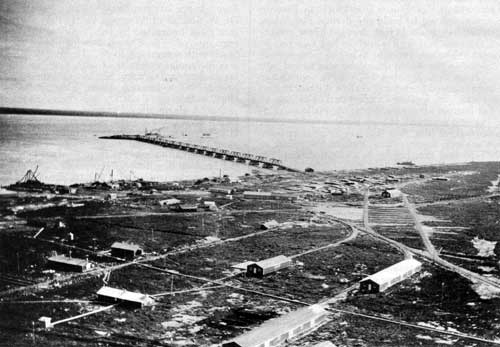In the early part of the last century, farsighted, adventurous Canadians had a dream. They would build a transportation corridor from the prairies to Hudson Bay and from there to the great ocean highways connecting the world. It would haul our riches to European markets via the shortest and most economical route possible. All they needed was a railroad and a deep water port.
They set out to build it. Their goal was to locate the terminus at a northern location known as Port Nelson which is where the mighty Nelson River, which drains lake Winnipeg, flows into the Bay. Starting in 1912 and through to 1914, much work was done with the rail line constructed, an island created connected from the mainline by a half mile bridge to access deeper waters. Summers saw as many as 1,000 men on site in a burgeoning village as construction proceeded. Then the War intervened and in a very short time, the dream was destroyed both by the need to move resources overseas to fight and also by powerful political forces that opposed the plan.

Eventually, Port Nelson was abandoned in favour of Churchill. But the rail line right of way still exists, the bridge and the island remain and the dream is being rekindled. Despite lobbies to the contrary, the world will continue to use fossil fuels for many years to come as the transition to other energy sources takes place and Canada’s contribution of the greenest production of these fuels can help get many markets through that transition. A pipeline following the old railway right of way offers the perfect opportunity to take this product to world markets through the northern port.
This plan brings the chance to create a partnership with First Nations that will help them develop their own autonomous economy and rebuild independent communities. It is a win-win for all concerned.
All the prairie provinces stand to benefit from this corridor, called Neestanan, which will also be the route for all kinds of prairie produced products from grain, industrial goods such as farm equipment and buses manufactured in Manitoba, to potash from Saskatchewan and petroleum products from Alberta. But Manitoba stands to gain the most with dozens of spin-off benefits and taxes, not to mention jobs and development.
Dreams of better utilization of our northern ports have resurfaced from time to time, the most recent happening in 2010, when the Selinger government convened a three-day conference to discuss the feasibility of a northern Arctic gateway route to Asia via Churchill. This time is different, though. The group behind Neestanan have created a plan that can work, and which should be well received if the country is sincere about reconciliation with First Nations.
To oppose this plan would make a travesty of all the fine words coming from federal politicians, whose blessing will be needed to open the port to export.
Stay tuned as we walk beside this initiative that will be so good for out First Nations and our province.
